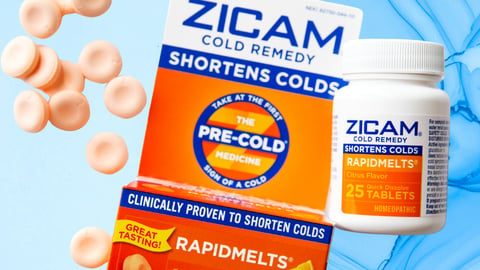How Haleon Uses Zero-Party Data to Build Interactive Consumer Experiences
Today’s marketers face a Catch-22 situation: Shoppers are demanding evermore personalized digital experiences, but they're often reluctant to share the data that enables such experiences.
Trust is at a premium, with consumers worried about how brands are using their information. Many consumer goods companies are now looking ahead to a cookieless future, with transparency, authenticity, and privacy topping the list of priorities they must get right.
Haleon has found a creative way to navigate this challenge. In their latest marketing campaign, the global consumer health company has put together a Vitamin Quiz to gather zero-party data in an interactive and transparent way. Using software from marketing platform Jebbit, the quiz asks consumers about their age, nutrition, and activity level, and then directs them to the relevant Centrum product.
The result of a 2019 merger between pharmaceutical giants Pfizer and GSK, Haleon now serves more than 100 markets and includes brands such as Sensodyne, Advil and, of course, Centrum vitamins.
Investing in the consumer selector quiz technology has paid dividends, James Sharman, Haleon’s northern Europe marketing performance and content lead, tells CGT. As a result of the integration, the company has increased consumer engagement, slashed time-to-implementation, and made Haleon’s content more relevant and engaging.
Building The Value Exchange
Haleon first partnered with Jebbit at the end of 2021 in the U.K. The initial goal was to drive more engagement for consumers across the whole user journey in both paid and owned media. Sharman says the company also wanted to capture more zero- and first-party data and reduce reliance upon third-party data in their media plans.
“Finally, and most importantly,” Sharman says, “we wanted to create value exchanges for our consumers and provide personalized, relevant information to help their everyday lives. That could be through various forms from making the category easier to research and buy, to providing content to help their health needs.”
In just a short time, the partnership has had a big impact: “It makes our brand teams think differently about the role of our websites, specifically how they are set up in order to provide consumers with a better user experience, and then what we do with the data and insights we collect,” Sharman shares.
[Related: How CGs Like Reckitt, Kellogg's, and General Mills Define Personalization]
The brands teams have particularly witnessed immense benefit, both in shortening implementation time and using insights gathered across other parts of the marketing plan such as creative, media and product development. “In time we plan to expand the functions that have access to Jebbit, such as our Expert team, who are responsible for our marketing to healthcare professionals,” Sharman says.
The experience has also helped the brand realize the opportunities inherent in personalization, and Haleon is currently in the process of expanding its digital experience usage across their other brands.
“The positive results, such as on-site engagement metrics and the product selectors completion rate, has shown us that consumers are more than willing to lean into an advertiser if the value exchange is clear, beneficial and without barriers,” Sharman notes.
The team initially split measures for success across several areas: increasing average session duration for Centrum website visitors, The time to build the experience from MVP brief to go-live, increasing quality traffic arriving from paid search and reducing bounce rates.
Research showed half the Centrum product selector users had never bought a multivitamin before, making it all the more important to provide a clear, personalized selection stage for these newcomers. Information gathered at this stage of the purchase journey is also immensely useful, Sharman says.
“Likewise, for Centrum, we are gathering data and insights on potential new customers at scale, which in turn can be used in other parts of our marketing plan to make our content more useful and engaging,” he adds.
This process forms part of Haleon's data flywheel, in which the data and insights collected from experiences are recycled and used to validate Haleon's audience segmentation. “The hypothesis being that over time, the increase in zero/first party data enriches the segmentation with less reliance on external data sources,” Sharman explains.
There were some minor bumps in the road initially, as Haleon had to manage and investigate the privacy consent in partnership with a third party for the first time, but Sharman says there were no issues. Looking ahead, he predicts customer experiences will become more immersive (or informative, depending on the mission) as technology advances and consumers' expectation of an experience grows.
[See Also: Haleon and Barilla Expand Accessibility for Blind and Visually-impaired Consumers]
Similarly, Sharman says the use of experiences will grow and be embedded across more touchpoints, both paid and owned. “This will create opportunities for partnerships, either with retailers or complementary brands,” he explains. “Brands will need to create truly meaningful connections with purpose in order to capture and keep user’s attention. Personalization without relevance, or a clear incentive, will frustrate consumers.”
In terms of more moonshot goals, Sharman is eyeing voice-enabled virtual assistant technology. “I’d love to find a way to partner our experiences with voice apps or home assistants such as Alexa as the use of voice control continues to rise,” he shares.
- Level-Up Consumer Engagement
Haleon’s James Sharman shared some best practices for CG companies seeking to enhance their consumer engagement capabilities.
- Spend time putting yourself in the consumers shoes and navigate the online user journey. What are the pain points? Barriers to entry? What is in your potential control to change?
- Once you know what your experience will be, identify what the minimum requirements and parameters for success are, and focus on going live quickly. Digital experiences will evolve with consumer needs, the insights you gather, and with technology changes, so trying to build the ‘perfect’ experience for go-live will cost you time, resources and valuable insights will be missed.
- Be clear and concise, especially on the experience landing page. Make the incentive clear, limit text, and provide clear calls to actions throughout to guide the user through.
- What is the intended next step? The experience should complement the user's journey and not lead to a dead end.
- Spend time putting yourself in the consumers shoes and navigate the online user journey. What are the pain points? Barriers to entry? What is in your potential control to change?





